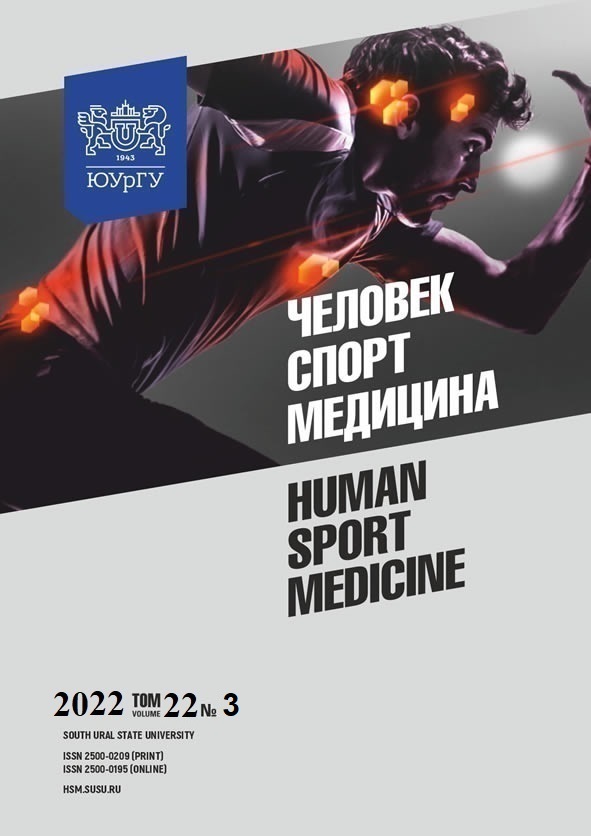BIODYNAMIC CHARACTERISTICS OF FUNCTIONAL ADAPTATION IN POLE VAULTERS
Abstract
Aim. The aim of the study was to evaluate speed and strength performance in pole vaulters depending on their sports skills. There has been much discussion about ways to improve athletic performance in trained track and field athletes, which still remains relevant. Materials and methods. The study involved twelve male pole vaulters aged from 16 to 25 years (2nd adult rank to Master of Sport). Biodynamic data were obtained with Biodex System 4 Pro (USA) and included velocity data (torque and peak torque), time to peak torque, coefficient of variance, and average power during flexion/extension of the knee joint and abduction/adduction of the shoulder joint. Results. The unequal ratio of the masses of the contralateral limbs directly affects the strength component of athletes. The level of asymmetry depends on sports skills but does not exceed a statistically significant level. Conclusion. Contralateral limb asymmetry in pole vaulters decreases with the increase of athletic skills. Speed and strength performance is not a determining factor of athletic performance of male pole vaulters. Elite athletes should focus their efforts on the improvement of intramuscular and intermuscular coordination and psychological stability.
References
References on translit
Copyright (c) 2022 Human. Sport. Medicine

This work is licensed under a Creative Commons Attribution-NonCommercial-NoDerivatives 4.0 International License.















